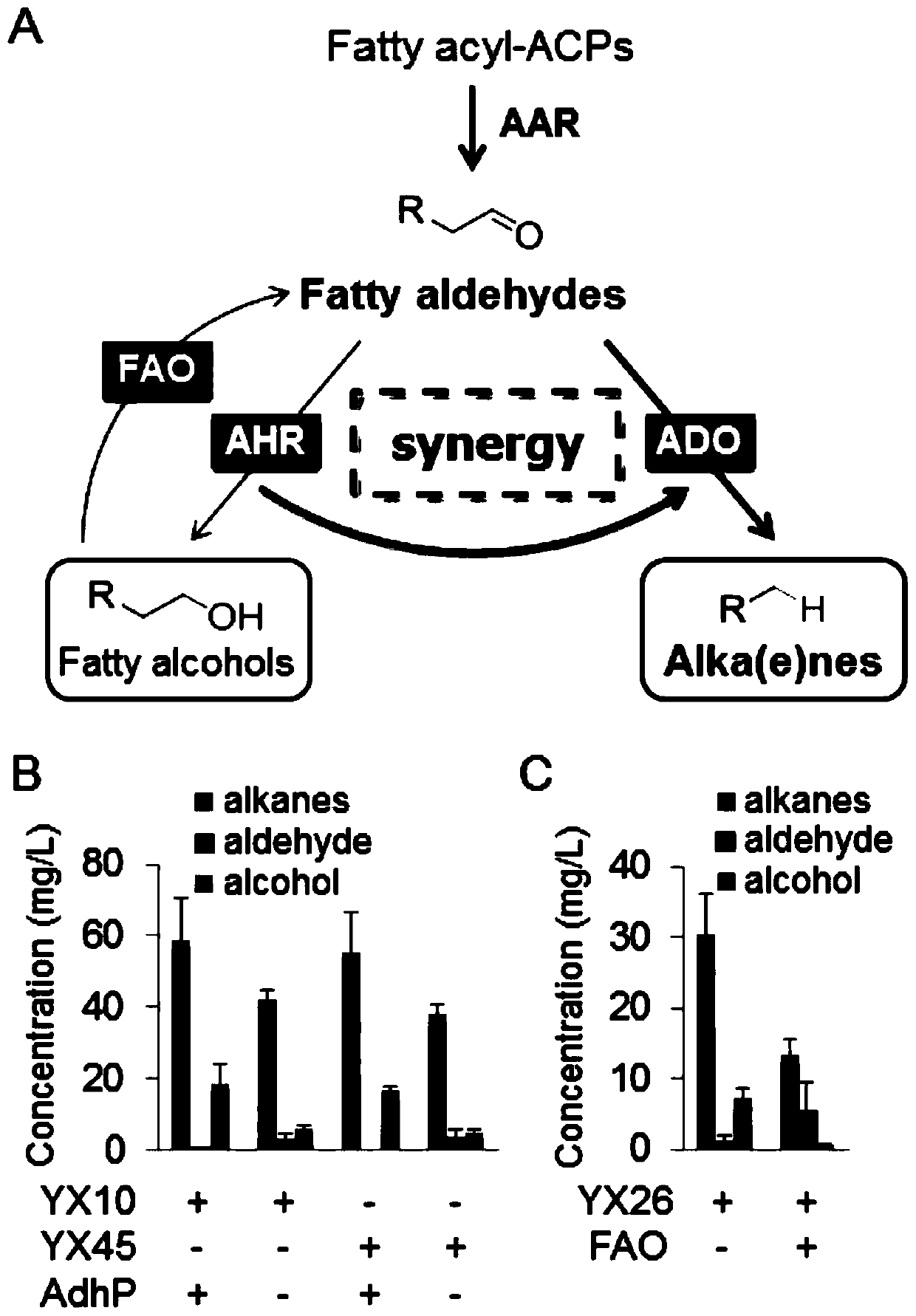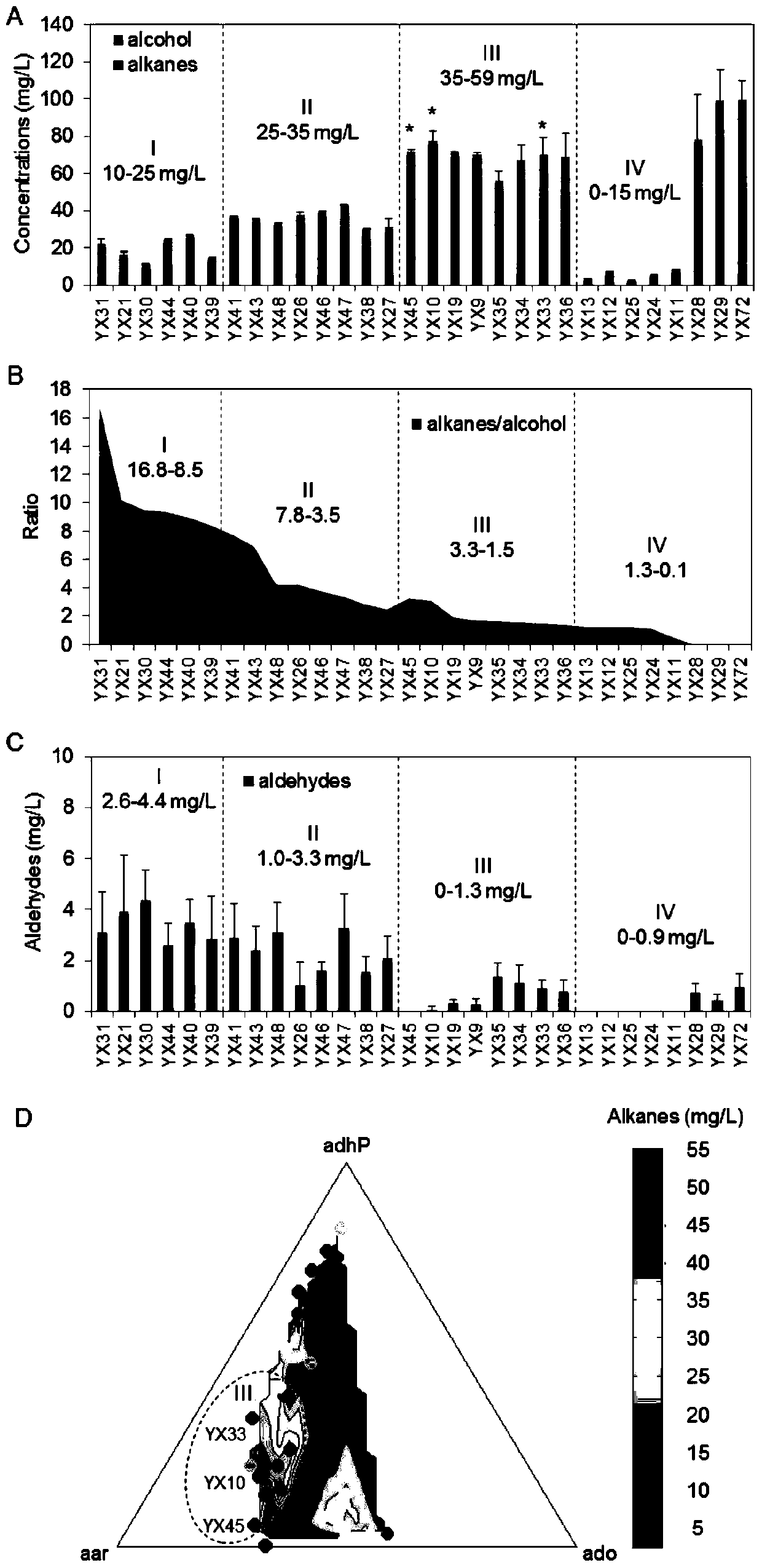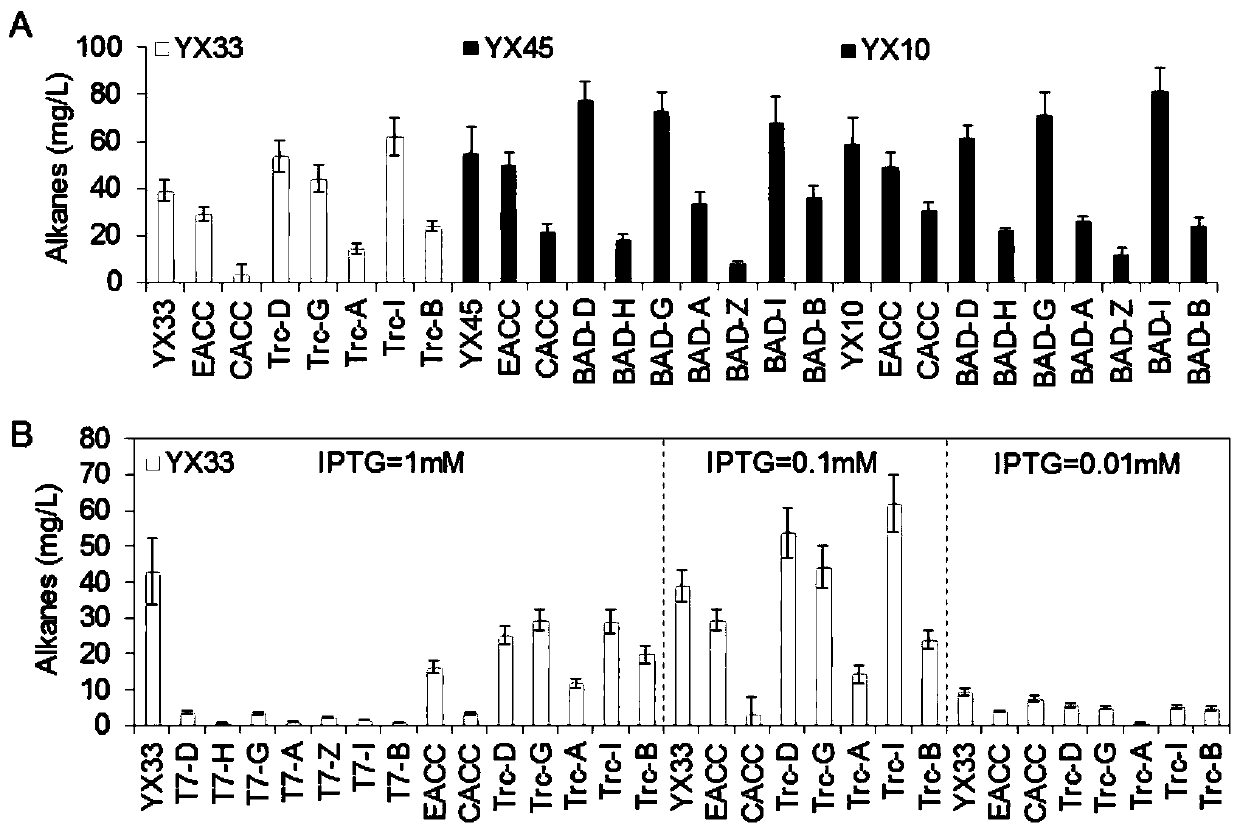Gene elements, expression vectors and their applications
A technology for expression vectors and genes, applied in the field of synthetic biology, which can solve the problems of unsatisfactory total output and other problems
- Summary
- Abstract
- Description
- Claims
- Application Information
AI Technical Summary
Problems solved by technology
Method used
Image
Examples
Embodiment 1
[0048] Example 1: Appropriate utilization of competing AHR pathways to enhance aliphatic hydrocarbon production.
[0049] Experimental Materials:
[0050] 1. Gene
[0051] 1) AAR: Acyl-ACP reductase, derived from Synechococcus elongatus PCC7942, the protein sequence is accession number: YP_400611, the codon is optimized according to Escherichia coli, and the optimized DNA molecule encoding ADC7942 has the expression of aar Nucleotide sequence, gene synthesized in GENEART.
[0052] 2) ADO: aldehyde deformyl oxidase, derived from Synechococcus elongatus PCC7942, the protein sequence is accession number: YP_400610, the codon is optimized according to Escherichia coli, the optimized DNA molecule encoding ADO has ado The nucleotide sequence shown is the gene synthesized in GENEART.
[0053] 3) Fatty alcohol oxidase (fatty alcohol oxidase, FAO), Candida tropicalis (Candidatropicalis, ATCC 20336) protein information is: GenBank: AAS46878.1, Accession: AY538780.1, GI: 44194456, acc...
Embodiment 2
[0123] Example 2: Adaptation of fatty acid synthesis
[0124] Experimental Materials:
[0125] Bacterial strain information, reagent and substratum etc. are identical with embodiment 1
[0126] experimental method:
[0127] 1. The construction method and plasmid information of YX33, YX10 and YX45 are the same as in Example 1.
[0128] 2. See Table 5 for the plasmid information of each gene in the overexpression fatty acid synthesis pathway.
[0129]3. Heat-shock transformation of YX33, YX10 and YX45 with the plasmids in Table 5 into E. coli BL21(DE3) bacteria, and screen on LB solid plates. Cells were cultured in a 30°C incubator. When YX33, YX10 and YX45 were co-transformed with Trc-Fab series genes into E.coli BL21(DE3) strain for fermentation, the IPTG concentration was divided into three concentrations of 1mM, 0.1mM and 0.01mM for induction.
[0130] 4. Fermenting the bacterial strain transformed with each plasmid, the process is the same as in Example 1.
[0131] 5....
Embodiment 3
[0142] Example 3: Adaptation for lipid degradation
[0143] Experimental Materials:
[0144] The strain information, reagents and medium etc. are the same as in Example 1.
[0145] experimental method:
[0146] 1. The construction method and plasmid information of YX33, YX10 and YX45 are the same as in Example 1.
[0147] 2. See Table 7 for the plasmid information of lipid degradation series.
[0148] 3. YX33, YX10 and YX45 were heat-shock transformed with the plasmids in Table 7 into E. coli BL21 (DE3) bacteria, and screened on LB solid plates. Cells were cultured in a 30°C incubator. When YX33, YX10 and YX45 were co-transformed with Trc-Fab series genes into E.coli BL21(DE3) strain for fermentation, the IPTG concentration was divided into three concentrations of 1mM, 0.1mM and 0.01mM for induction.
[0149] 4. Fermenting the bacterial strain transformed with each plasmid, the process is the same as in Example 1.
[0150] 5. The extraction of product, method process is ...
PUM
 Login to View More
Login to View More Abstract
Description
Claims
Application Information
 Login to View More
Login to View More - R&D
- Intellectual Property
- Life Sciences
- Materials
- Tech Scout
- Unparalleled Data Quality
- Higher Quality Content
- 60% Fewer Hallucinations
Browse by: Latest US Patents, China's latest patents, Technical Efficacy Thesaurus, Application Domain, Technology Topic, Popular Technical Reports.
© 2025 PatSnap. All rights reserved.Legal|Privacy policy|Modern Slavery Act Transparency Statement|Sitemap|About US| Contact US: help@patsnap.com



